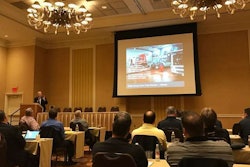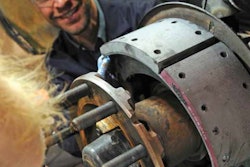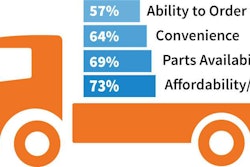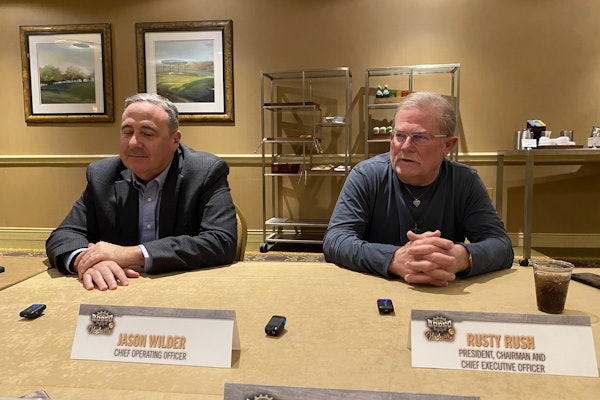It’s been a little more than three years since NHTSA completed the rollout of it reduced stopping distance (RSD) mandate for heavy-duty trucks.
With most of those trucks now close to or out of warranty, Service Opportunities Learning Days (SOLD) took a moment Sunday to look at how these new components need to be serviced in the aftermarket. Paul Jones, service engineer at Bendix Commercial Vehicle Systems, led the presentation.
Jones says the first thing service providers need to know about RSD is the importance of replacing like-for-like. While Federal law does not explicitly require a vehicle owner or service provider replace like-for-like during a brake job, Jones says RSD-equipped trucks must remain at factory condition throughout their life cycle.
“You don’t want a truck going out on the road and suddenly the vehicle begins stopping at a longer distance,” he says.
Additionally, Jones says only OEM brake suppliers (Bendix and Meritor) can offer true OEM-certified replacement parts, which he says are approved by OEMs using stringent vehicle testing. Other RSD products sold in the aftermarket likely meet RSD requirements but cannot be promoted as true OEM replacement, he says.
Jones also mentions most air disc brake technology meets or exceeds RSD drum brake stopping performance, which is helping to drive adoption of that technology. Air disc brake rates have jumped from 500,000 to 1.5 million units in service in less than two years, and are nearing RSD population numbers (2 million) in the market.
And Jones says this air disc brake technology also can be swapped in place of drums for $800 to $1,000 per axle at the OEM factory level.
Jones’ presentation Sunday also included a quick industry overview of vehicle safety systems and adoption rates. Like RSD, Jones says a two-part NHTSA Electronic Stability Control (ESC) mandate for tractors and busses will be introduced later this year, while anti-lock braking systems, collision mitigation and lane departure warnings aren’t yet mandated but are becoming standard by OEMs across the industry.
Jones says the keys to understanding these systems are vehicle sensors. Operating a vehicle without properly calibrated sensors weakens each system and puts the driver and other vehicles at risk. Jones says Bendix—which produces each piece of this technology—provides software to monitor and calibrate the sensors for each system.
Service information also is available in spades online. Jones says Bendix operates multiple websites to provide technical training, diagnostic and engineering information to service providers to ensure safe, quality maintenance.











